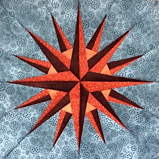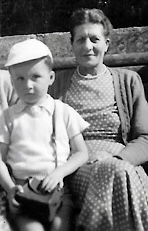Des Lewis will be 77 years old on 18 January 2025
Those who have read these episodic brainstorming reviews of mine must know they are very personal — rough-shod and spontaneous. Synchronicity and anagram mixed. I know they are not professional, never potentially publishable other than in the madness of my head, but I do hope they show grains of dark truth and cosmic panache.

These Des Lewis Gestalt Real-Time Reviews were founded in 2008.

‘What’s the loveliest word in the English language, officer? In the sound it makes in your mouth, in the shape it makes on the page? What do you think? Well now, I’ll tell you: E-L-B-O-W. Elbow.’ — THE SINGING DETECTIVE

“How shall a man find his way unless he lose it?” — Walter de la Mare

To any current genre author I have reviewed before — if you have a new story recently published or soon to be published in a collection or anthology, you may have a review by me of the story that also showcases where it is published. See HERE. (This is because I am no longer well enough to review as many books as I once did.)
Fresh Fictions, free to read HERE.
No AI input in preparation of my texts whatsoever.
THE NEW NONSCENIC
Photos here: https://conezero.wordpress.com/2024/02/24/d-f-lewis-recent-photos-1/


PAYMON’S TRIO by Colette de Curzon
“…and I hated as much as I admired the music I was rendering.”
My copy is numbered 42/200. The former number having the answer to all things?
On one level, an effectively disturbing supernatural classic tale of the old school, a new discovery after being written in the year when I was one year old and subsequently hidden away, judging by the genuine sounding information on the back cover of this aesthetic pamphlet.
It tells of a discovery by means of what I have long called ‘the synchronised shards of random truth and fiction’. You look for for one book of which you have some knowledge in the real world but you find another book instead by accidental means, one you have not heard of and looking a tad old and ‘occult.’ It is a book where hidden away in its stuck down fly leaf is a music score for a classical trio for piano, violin and cello, so intriguing that you get your two male friends one by one – the third one being younger than you and your other friend and a bit more effeminate-faced – gradually, by accretive course of the seemingly autonomous plot, to play this score’s music oxymoron, instrument by instrument. With, as I say, disturbing results. Adept, on that level. Well worth reading for those who like the genre of strange stories.
POSSIBLE SPOILERS PLUS A WARNING:-
A hour or so before reading this story, I had synchronous cause to re-read and review here a story called ‘Winter’s Traces’ that first appeared in my edited/published Classical Music Horror Story Anthology in 2012. It explicitly tells, inter alios, of what it calls “The love that dare not speak and all that” in connection with autonomous earworms and the relationship of an old composer who had just died, and his younger long-term companion called Christopher. Having now researched, in the light of the de Curzon work, the name Paymon (Paimon) and his dromedary that appear as an image on the discovered music score, I seriously wonder if this recently discovered and Nightjar published story in itself that tells us of such recondite discoveries-within-discoveries is actually implying horrors that should not have been dared spoken of? Let alone released into the world or played, instrument by instrument, until all three instruments are being played in unison? Too late for me to worry.
THE AUTOMATON by David Wheldon
“‘Oh! Your hair! You need a hand-maid to brush it!’ said the impresario in his soft voice. ‘But please, Madame, make do with me.'”
The narrator is boy or youth, son of the theatre’s caretaker, a theatre called the Comedy, a name that somehow ironically is the perfect early 20th century name for the era that surrounds it (with the poignant irony I now transmute, as a result, into a re-interpretation of the de Curzon story’s attitude towards the sexual or social mores of its era as my own sort of artful literary chess perdu) – a world, here, almost steampunk, where the narrator is a go-between for messages addressed from social class to social class, from well-bred to pawn or peon. But, question, who reaps the benefit of businesses to which the pawns contribute more than the King or Queen, only to be decimated by the collateral checkmate of the Great War? The Automaton herself is entrancing and life-like beyond the fiction that here creates her. Anxious and fulfilling for future’s hindsight reader. Another stylish, deeply atmospheric work to match against the powers of preternatural fiction equally presented by similar methodical moves, instrument by instrument, in the de Curzon.
Perdus and zugzwangs set as mines.
As a possible cohering aside to both stories, my review of ZUGZWANG by Quentin S. Crisp: https://dflewisreviews.wordpress.com/2016/10/05/rule-dementia-by-quentin-s-crisp/#comment-8371